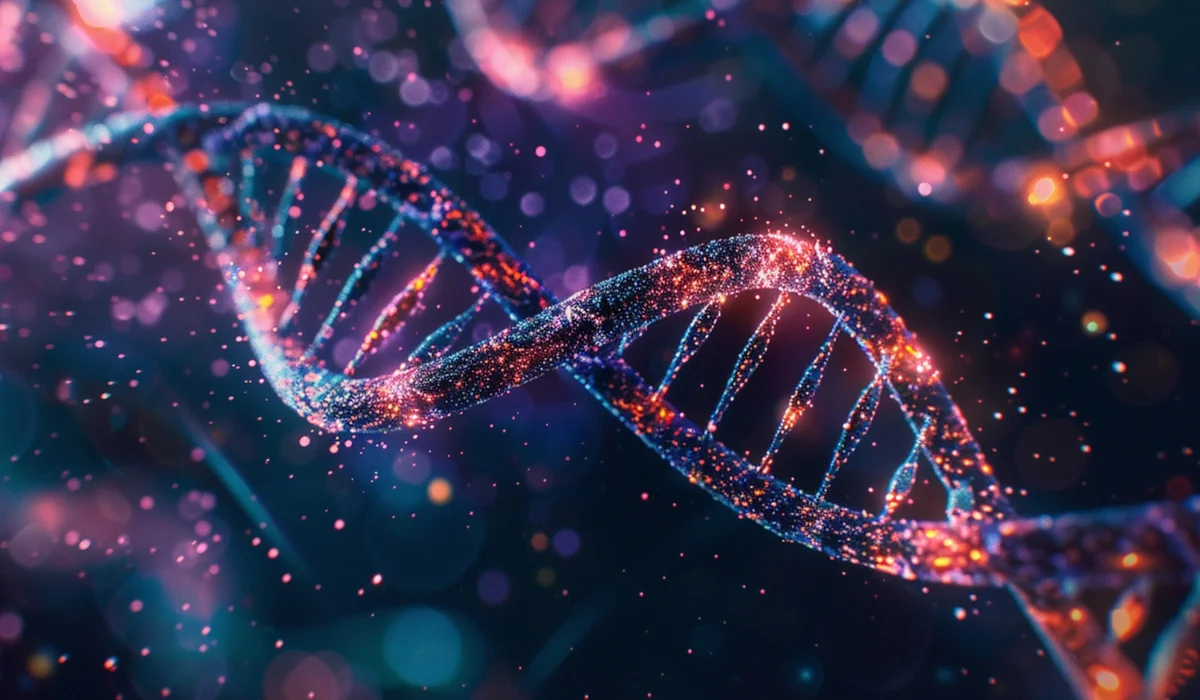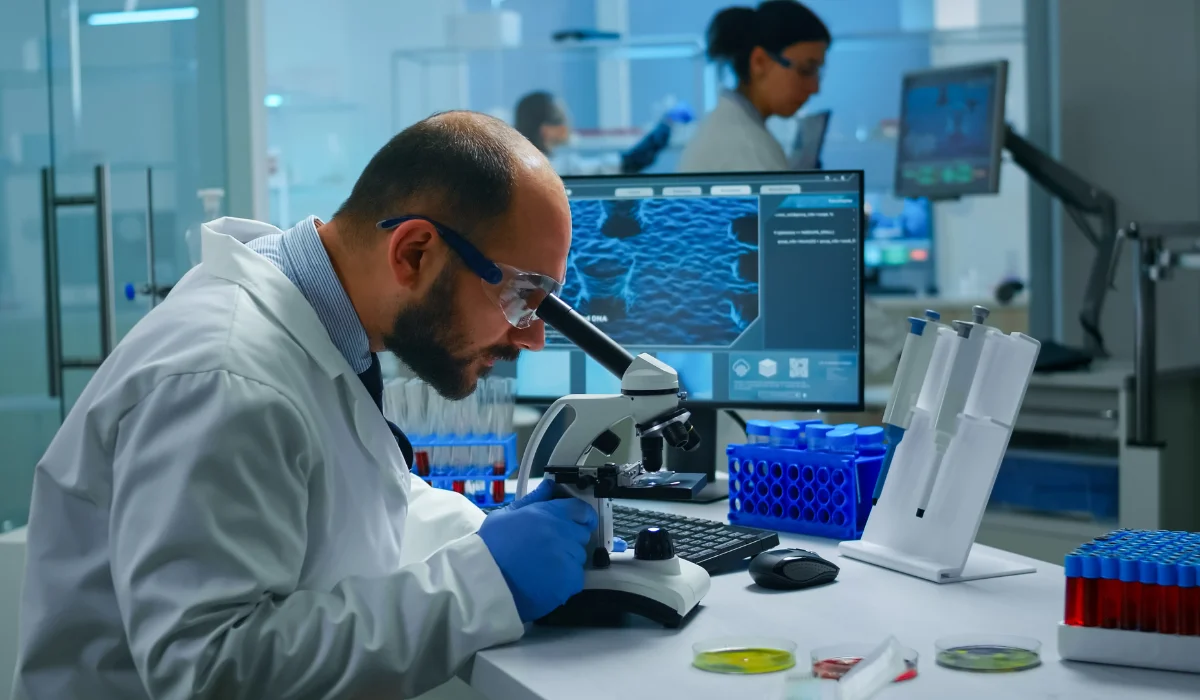How is Genomics AI Uncovering the Secret of DNA?
- SoftudeOctober 18, 2024
- Last Modified onOctober 18, 2024
Artificial intelligence is already used in various fields. In healthcare, the technology shows impressive outcomes in drug discovery, patient diagnosis, robotic surgery, and personalized medicine. AI in genomics is relatively new, but its role is important more than ever. Let’s understand what is genomics AI and its importance.

The healthcare industry is growing in terms of data, not only patients' data but also information that helps scientists understand why a particular disease occurs in certain people and how to prevent it. All the answers lie in our genes.
Genetics plays an important role in predicting, diagnosing, and even treating diseases. However, humans have yet to study the complete set of genes. After completing the world's largest human genomic sequence project, we have only gigabytes of data.
Extracting information from this data is very complex and impossible without the help of technology. By the next decade, researchers believe we will generate exabytes of data, which means even the traditional methods will fail in analysis.
With next-generation sequencing techniques, not only will the size of genome data grow but also its complexity. Researchers need more than traditional computational methods and technology to interpret valuable information from this ocean of data. Artificial intelligence is that technology.
Though it's relatively new in this field, researchers trust its capabilities and have given it a whole new identity: genome AI.
5 Ways AI is Used in Genomics
1. Solving the Data Deluge in Genomics
AI is a data-reliant technology and is similar to human intelligence. It is good at dealing with enormous amounts of data, otherwise challenging for traditional technologies. Not only can AI manage the data's massiveness, but it can also find meaning in that information.
Integrating this technology into software and tools adds reasoning and analytic capability, making finding patterns, correlations, and anomalies within data easier. For genomics, AI can process high-dimensional data, such as single nucleotide polymorphisms (SNPs), to uncover associations with diseases. By knowing this correlation, researchers can determine the genetic risk factors for complex diseases like cancer, diabetes, and heart disease.
Besides data analysis, genome AI has a far greater impact on various tasks in this field.
2. Finding Disease-Causing Genes
Even a small change in DNA can cause serious disease. These are called genetic variants, and millions such exist in different individuals. The nature of these variants makes things complex, as not all variants are disease causing. However finding the locations of these variants in DNA sequence can disclose a lot about the diseases.
But it is very difficult and time-consuming for researchers. AI can solve this complexity by rapidly examining the raw DNA data and spotting disease-causing variants precisely.
Real Example
DeepVariant, created by Google, is a real example of using AI in finding genetic variants. Its accuracy is far better than Bayesian, a traditional method. The platform uses convolution neural networks (CNN) and can work in different areas of genomics with specific training.
Also Read: How Pharma Companies are Using AI in Drug Discovery
3. Understanding the Function of Non-Coding DNA

There is coding and non-coding DNA in our body. Latter ones are the regions responsible for producing proteins indirectly and controlling the functions of genes. So far, genomic researchers have focused only on coding genes because of data availability. But now we have non-coding ones after the completion of the first gap-less genome, and there's a lot of untapped information for better decision-making.
However, interpreting non-coding genes is difficult because of less understanding of their functioning and how they regulate different genes in the structure. How does AI help read non-coding DNA?
Real Example
DeepC, an AI model, can analyze the 3D genome structure and determine which part of the non-coding regions is linked to the disease. Using a transfer learning approach, this AI model can also predict how different gene variations can affect the structure. This model was used during COVID-19 to understand why COVID virus caused mild symptoms in some people, whereas it caused respiratory failure in others.
4. Detecting Genetic Disorders with Facial Analysis
The best use of AI in genomics is to identify genetic disorders such as Down syndrome. These syndromes are often manifested in specific facial characteristics.
AI can analyze facial features from images and detect subtle changes in the structure and expression. By comparing these characteristics, AI can tell whether the person can have Down syndrome or not.
Real Example
Face2Gene is a powerful AI tool for clinical and genetic diagnostics. It can scan over 17,000 facial images and find rare diseases with 90% accuracy in its results.
5. Improving the Function of Gene-Editing
CRISPR (Clustered Regularly Interspaced Short Palindromic Repeats) is a common gene-editing technology that helps in making precise changes in the DNA of living organisms. While CRISPR has immense potential, there are challenges related to accuracy.
AI-designed gene editors are improving the precision of CRISPR. AI algorithms also optimize gene editing methods, off-target prediction, RNA designing, and Cas9 variant selection. This use of AI in gene editing fine-tunes the CRISPR technology and improves the accuracy.
Challenges of Genomics AI
While artificial intelligence is improving clinical and genetic diagnostics, genomics AI is posing serious challenges on the other hand.
- Training AI
There is much debate about how AI will be trained on complex genomic data and integrated with other clinical and molecular data.
- Replications of AI Tools
Replicating the existing AI gene editing tools and those used in genomic medicine will require too much work. Data privacy will add a challenge, restricting the sharing of various methods and data used for training AI models.
- Regulatory and Compliance
Genome AI is not out of the radar of regulatory standards and compliance. Merely developing effective AI tools for clinical genomics will not guarantee that they are fit for use. Certifications, clearance from regulatory authorities, and transparency on liability will slow its wide adoption.
Conclusion
Genomics holds a wealth of information about how diseases occur and how they can be prevented. With AI, genome researchers can use this data, which was previously limited due to its size and complexity. From predicting how changes in genes will affect human health to detecting rare disorders, the use of artificial intelligence in clinical and genomic diagnostics will grow further. The technology will also reduce the time and financial burden of studying trillions of genome data at a low cost.
Liked what you read?
Subscribe to our newsletter








.png)



